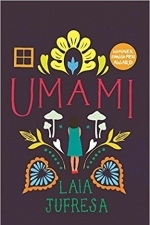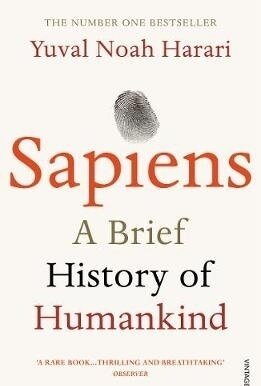Search
Search results

NAVIGON USA
Navigation and Travel
App
Whether on holiday, taking a weekend trip or heading off somewhere as yet unfamiliar – with...

Newchic – Online Fashion Shop
Shopping and Lifestyle
App
Discover latest fashion trend online, get chic on your life, Newchic App offers over 10 thousand...

Scout Outdoor-Navigation für Radfahren und Wandern
Navigation and Health & Fitness
App
Scout is your iPhone companion for outdoor activities. Make use of topographic maps for hiking...
Hazel (1853 KP) rated The Chilbury Ladies' Choir in Books
May 23, 2017
Wartime Fiction
This eBook was provided by the publisher via NetGalley in exchange for an honest review
"Just because the men have gone to war, why do we have to close the choir? And precisely when we need it most!"
Set in the fictional village of Chilbury, Kent during the Second World War, The Chilbury Ladies’ Choir explores the lives of the women left behind whilst the men go off to fight. The remaining villagers are disappointed at the closing of the church choir, which, according to the vicar, cannot go on without any men to sing the tenor and bass parts. However, the arrival of bold, forthright Primrose Trent brings the birth of a new choir, a choir for women only.
Although a war is going on, the ladies of Chilbury have so many other things on their minds. Told through a conflation letters and diary entries, The Chilbury Ladies’ Choir reveals the everyday lives of a handful of characters. Mrs Tilling’s journal provides an overview of the general events, whilst 18-year-old Venetia’s letters divulge the wiles and charms she uses in the name of romance. Other characters, particularly the young teenager, Kitty, offer other insights to the goings on in the village.
From falling in love, to having babies, The Chilbury Ladies’ Choir is full of secrets, schemes and misunderstandings that almost let the villagers forget there is a war on. However, the effects of war do reach the little village, bringing with it terror and grief.
The individual stories that make up the book provide the reader with a number of scenarios that are full of emotion, but equally entertain. One moment the horror of war could leave readers in flood of tears, the next, Mrs B.’s pretentious personality and vaunting comments bring amusement and laughter.
All the while these events are playing out, the Chilbury Ladies’ Choir pulls the women together, providing them with a source of comfort to get them through the terrible times. No matter what disasters befall them, whether caused by war or their own actions, joining together in song gives them a purpose and opportunity to have a break from their fears and grief. War may destroy, but they will carry on singing.
Written in the manner of private letters and journals gives the novel a personal touch. The story is not merely narrated, it is expressed through the emotion and feelings of individual characters, making the scenarios seem more authentic. The downside to this method is the lack of distinction between each character’s voices. With no detectable dialect, the musings of a 13-year-old are composed in much the same manner as the much older Mrs Tilling.
The Chilbury Ladies’ Choir is an enjoyable piece of historical literature, which is bound to appeal to many people. Although set during World War II, its primary focus is on the people in the village, making it more attractive to readers who are fed up of reading about bombs and fighting. A mix of family issues, bribery and romance provide considerably more entertainment than a generic wartime novel. Being Jennifer Ryan’s debut novel, The Chilbury Ladies’ Choir is of a quality that suggests the author has so much more to deliver in the not-so-distant future.
"Just because the men have gone to war, why do we have to close the choir? And precisely when we need it most!"
Set in the fictional village of Chilbury, Kent during the Second World War, The Chilbury Ladies’ Choir explores the lives of the women left behind whilst the men go off to fight. The remaining villagers are disappointed at the closing of the church choir, which, according to the vicar, cannot go on without any men to sing the tenor and bass parts. However, the arrival of bold, forthright Primrose Trent brings the birth of a new choir, a choir for women only.
Although a war is going on, the ladies of Chilbury have so many other things on their minds. Told through a conflation letters and diary entries, The Chilbury Ladies’ Choir reveals the everyday lives of a handful of characters. Mrs Tilling’s journal provides an overview of the general events, whilst 18-year-old Venetia’s letters divulge the wiles and charms she uses in the name of romance. Other characters, particularly the young teenager, Kitty, offer other insights to the goings on in the village.
From falling in love, to having babies, The Chilbury Ladies’ Choir is full of secrets, schemes and misunderstandings that almost let the villagers forget there is a war on. However, the effects of war do reach the little village, bringing with it terror and grief.
The individual stories that make up the book provide the reader with a number of scenarios that are full of emotion, but equally entertain. One moment the horror of war could leave readers in flood of tears, the next, Mrs B.’s pretentious personality and vaunting comments bring amusement and laughter.
All the while these events are playing out, the Chilbury Ladies’ Choir pulls the women together, providing them with a source of comfort to get them through the terrible times. No matter what disasters befall them, whether caused by war or their own actions, joining together in song gives them a purpose and opportunity to have a break from their fears and grief. War may destroy, but they will carry on singing.
Written in the manner of private letters and journals gives the novel a personal touch. The story is not merely narrated, it is expressed through the emotion and feelings of individual characters, making the scenarios seem more authentic. The downside to this method is the lack of distinction between each character’s voices. With no detectable dialect, the musings of a 13-year-old are composed in much the same manner as the much older Mrs Tilling.
The Chilbury Ladies’ Choir is an enjoyable piece of historical literature, which is bound to appeal to many people. Although set during World War II, its primary focus is on the people in the village, making it more attractive to readers who are fed up of reading about bombs and fighting. A mix of family issues, bribery and romance provide considerably more entertainment than a generic wartime novel. Being Jennifer Ryan’s debut novel, The Chilbury Ladies’ Choir is of a quality that suggests the author has so much more to deliver in the not-so-distant future.
Purple Phoenix Games (2266 KP) rated Welcome To... in Tabletop Games
Jun 12, 2019
Are there still city planners? They go by a different name nowadays right? Civil engineers? Am I thinking of the wrong thing? In any case, you get to be one of those people in Welcome To…, which has one of the strangest titles for a game, especially when you look at that box cover. Are you gonna go all in on pools? Parks? Bisses (ooh I’m not too sure about this one)? Plan out your best three-street neighborhood in this light and fun roll cardflip-and-write game.
Here is a quick overview of game play without going through the whole rule book. Divide the shuffled card deck into three equal piles. Flip over the top card of each pile. You now have setup the game and revealed the first three combinations of cards you can use on your turn (see play pic at end of this post). Do you like that 3 and Pool combo? Cool. Write a 3 on the roof of a house on any of the streets on your sheet and mark a pool there too. FLIP all the cards again. Wanna take that 9 and Park? Okay. Mark a 9 on a house, Graffitimaster, and beautify your hood with an upgraded park. FLIP. Repeat. There are other cards that will be revealed as the game goes on, but I am simplifying two turns for you.
That’s the game. Everyone takes turns at the same time using the three card combinations presented to try to get the most points for having the best barrio. There are bonus goal cards that can be achieved too, but they are completely optional (akin to building the Wonders in 7 Wonders). Have I won this game yet in all my plays? Yes, once. But it’s not really about winning or losing. You are essentially playing against yourself and just trying to get the best score you can. It’s just that the other players are doing the same thing and you have to compare scores at the end.
Okay, the good and bad. Bad first – the pencils. The game comes with several golf pencils that just don’t cut it on the papers provided. Grab a good pen or marker to see your marks. The other components in the game are great. The game play is quick, as long as you don’t suffer from AP and have to carefully plan out every possibility for every possible combination presented. That can really slow the game down. Luckily, I don’t suffer from that and most of the time I probably need to do a more thorough job thinking through my turns, but that’s my burden to bear.
Aside from those items, the game is really good. I don’t own a large number of roll-and-writes somehow (and I WAS alive during 2018), so this was a great pickup for me as a variation in the genre. Okay fine, I also Kickstarted the expansion with the different themed pages, so I’m also looking forward to that fulfillment. All in all the game is very solid, and different enough to all my other games that I will be keeping it and trying to outscore my last play every time. We at Purple Phoenix Games give this a well-planned 19 / 24.
https://purplephoenixgames.wordpress.com/2019/02/04/welcome-to-review/
Here is a quick overview of game play without going through the whole rule book. Divide the shuffled card deck into three equal piles. Flip over the top card of each pile. You now have setup the game and revealed the first three combinations of cards you can use on your turn (see play pic at end of this post). Do you like that 3 and Pool combo? Cool. Write a 3 on the roof of a house on any of the streets on your sheet and mark a pool there too. FLIP all the cards again. Wanna take that 9 and Park? Okay. Mark a 9 on a house, Graffitimaster, and beautify your hood with an upgraded park. FLIP. Repeat. There are other cards that will be revealed as the game goes on, but I am simplifying two turns for you.
That’s the game. Everyone takes turns at the same time using the three card combinations presented to try to get the most points for having the best barrio. There are bonus goal cards that can be achieved too, but they are completely optional (akin to building the Wonders in 7 Wonders). Have I won this game yet in all my plays? Yes, once. But it’s not really about winning or losing. You are essentially playing against yourself and just trying to get the best score you can. It’s just that the other players are doing the same thing and you have to compare scores at the end.
Okay, the good and bad. Bad first – the pencils. The game comes with several golf pencils that just don’t cut it on the papers provided. Grab a good pen or marker to see your marks. The other components in the game are great. The game play is quick, as long as you don’t suffer from AP and have to carefully plan out every possibility for every possible combination presented. That can really slow the game down. Luckily, I don’t suffer from that and most of the time I probably need to do a more thorough job thinking through my turns, but that’s my burden to bear.
Aside from those items, the game is really good. I don’t own a large number of roll-and-writes somehow (and I WAS alive during 2018), so this was a great pickup for me as a variation in the genre. Okay fine, I also Kickstarted the expansion with the different themed pages, so I’m also looking forward to that fulfillment. All in all the game is very solid, and different enough to all my other games that I will be keeping it and trying to outscore my last play every time. We at Purple Phoenix Games give this a well-planned 19 / 24.
https://purplephoenixgames.wordpress.com/2019/02/04/welcome-to-review/
My rating 3.5
<i>I received this book for free through Goodreads First Reads.</i>
Written by the English Pen Award winner Laia Jufresa (and excellently translated by Sophie Hughes) <i>Umami</i> is a story of the troubled lives of a small community in Mexico as they go through various stages of grief. What this story reveals is that everyone deals with heartache in his or her own personal way, however the things they do can affect everyone around them.
Set in Belldrop Mews, Mexico City, five characters give an account of their own experiences over a five-year period, which when combined together produce an overview of life within the mews. Firstly there is Ana (2004), a preteen determined to plant her own garden in the depressing back yard of her family home. Despite her steps to do something positive, she and her family are still mourning the death of her little sister Luz who drowned a few years ago. The second perspective comes from Marina Mendoza (2003), a young adult artist suffering from an eating disorder whilst dealing with memories of her childhood.
Alfonso, the aging owner of the mews, begins his story in 2002 a couple of years after the death of his wife. Previously he was an anthropologist obsessed with the concept of <i>umami</i>, a Japanese word meaning <i>“a savory taste; one of the five basic tastes.”</i> He is an old soul that has fallen into depression, feeling, like Ana, a misfit. The final two narrators are young girls: Pina (2001) who is Ana’s best friend, and Luz (2000), Ana’s five year old sister shortly before she died. Both speak of loneliness as they look at the world through childishly naïve eyes. Pina is suffering the effects of her parents’ constant fighting, whereas Luz is crying out for attention from her family who will not let her join in the “big girl” activities.
<i>Umami</i> may not be a happy book but it has a very powerful voice. None of the characters have yet completely recovered from their experiences however they are all (barring Luz) making positive progress. Without knowing it, each member of the Belldrop Mews community is encouraging the rest as they drag themselves out from the depths of their despair – some by aspiring to be like another, and others listening to what their neighbours are telling them.
The message of this story is about the benefits of a community. Whether big or small, being within a group of people can prevent you from wallowing in your dark feelings and begin to continue with your life instead. This is something that the world at large would profit from.
The unconventional style of <i>Umami</i> may not be agreeable with some readers due to its lack of a clear beginning, middle and end. In fact it does not have a conclusion at all, leaving nothing fully resolved. Yet Jufresa did not intend it to end “happily ever after,” real life is not like that; but what is true is that with time and exposure to positive relationships things can get better.
The aspect preventing a higher rating is the occasional allusion to sexual content, especially from the mouths of girls too young to fully understand the concept. This was uncomfortable to read, however thankfully the majority of the novel was free of unpleasant imagery. <i>Umami</i> is down to earth, relatable and moving; Laia Jufresa is definitely an author to watch.
<i>I received this book for free through Goodreads First Reads.</i>
Written by the English Pen Award winner Laia Jufresa (and excellently translated by Sophie Hughes) <i>Umami</i> is a story of the troubled lives of a small community in Mexico as they go through various stages of grief. What this story reveals is that everyone deals with heartache in his or her own personal way, however the things they do can affect everyone around them.
Set in Belldrop Mews, Mexico City, five characters give an account of their own experiences over a five-year period, which when combined together produce an overview of life within the mews. Firstly there is Ana (2004), a preteen determined to plant her own garden in the depressing back yard of her family home. Despite her steps to do something positive, she and her family are still mourning the death of her little sister Luz who drowned a few years ago. The second perspective comes from Marina Mendoza (2003), a young adult artist suffering from an eating disorder whilst dealing with memories of her childhood.
Alfonso, the aging owner of the mews, begins his story in 2002 a couple of years after the death of his wife. Previously he was an anthropologist obsessed with the concept of <i>umami</i>, a Japanese word meaning <i>“a savory taste; one of the five basic tastes.”</i> He is an old soul that has fallen into depression, feeling, like Ana, a misfit. The final two narrators are young girls: Pina (2001) who is Ana’s best friend, and Luz (2000), Ana’s five year old sister shortly before she died. Both speak of loneliness as they look at the world through childishly naïve eyes. Pina is suffering the effects of her parents’ constant fighting, whereas Luz is crying out for attention from her family who will not let her join in the “big girl” activities.
<i>Umami</i> may not be a happy book but it has a very powerful voice. None of the characters have yet completely recovered from their experiences however they are all (barring Luz) making positive progress. Without knowing it, each member of the Belldrop Mews community is encouraging the rest as they drag themselves out from the depths of their despair – some by aspiring to be like another, and others listening to what their neighbours are telling them.
The message of this story is about the benefits of a community. Whether big or small, being within a group of people can prevent you from wallowing in your dark feelings and begin to continue with your life instead. This is something that the world at large would profit from.
The unconventional style of <i>Umami</i> may not be agreeable with some readers due to its lack of a clear beginning, middle and end. In fact it does not have a conclusion at all, leaving nothing fully resolved. Yet Jufresa did not intend it to end “happily ever after,” real life is not like that; but what is true is that with time and exposure to positive relationships things can get better.
The aspect preventing a higher rating is the occasional allusion to sexual content, especially from the mouths of girls too young to fully understand the concept. This was uncomfortable to read, however thankfully the majority of the novel was free of unpleasant imagery. <i>Umami</i> is down to earth, relatable and moving; Laia Jufresa is definitely an author to watch.
BookblogbyCari (345 KP) rated Sapiens: A Brief History of Humankind in Books
Aug 5, 2018
This book was chosen to be the first book read and discussed in an online non-fiction book club I recently joined – and I’m glad we did choose this one!
The book is an overview of homo-sapiens as a species, and how we have changed over the ages, and what we have done, before finally touching on where we are going. As such the book is a cross-pollination of history, sociology, and economics.
As you may expect from a book with such a broad scope, there are some sweeping statements, and rather than being a neutral dispassionate account, Harari makes his opinions very evident. However rather than being irritating, I feel this makes for a more entertaining read.
The book begins by introducing the theme of homo-sapiens in the context of the presence of the other human species that used to exist. He then goes on to describe the cognitive and agricultural revolutions. Then it’s the establishment of patriarchal social hierarchies across the world, largely based on historical conventions. Next Harari states that the purpose of religion is to unify fragile societies with superhuman legitimacy.
Harari then moves on to the scientific revolution, describing how an admission of ignorance by Europeans, along with a desire to discover and conquer new lands was key to the movement.
The conversation moves swiftly then to economics, using the fact that a bank can loan £10 for every £1 it has, to argue that our economics is based on trust in the future. Harari states that a country’s credit rating is more important than its actual resources. Harari describes capitalism and consumerism as being 2 sides of the same coin with two commandments: rich must invest, rest of us must buy. Consumerism, he says, aims to convince people that indulgence is good and frugality is self-oppression.
Harari also argues that, now, instead of relying on local communities the individual relies on the market or the state. Parental authority no longer sacred, he says, and state intervenes. And so when Harari asks if we are any happier now than when we were hunter-gatherers, he argues that our rise of wealth is offset by the disintegration of community life.
Harari also speaks of ecological degradation and our tendency to treat other species as a means to an end, for example, the farming of cow's and chickens has cut years off the lives of both, since they are killed as soon as they reach their maximum weight.
In the final chapter, Harari speculates on the future of mankind. With improvements in medical knowledge comes new ethical conundrums, he says. How will we handle the options of genetic engineering? What will the advent of artificial intelligence mean for humanity?
In my book club, we found that the book generated a lot of talking points. What would the world be like now, had the other species of humans survived? Why have so many cultures across history and the world had patriarchal hierarchies? Can societies improve over time, or is one style better than another? Can communism be considered a religion? Are human rights really just a figment of our collective imagination?
Whilst not everyone in my book club enjoyed the book equally, I would say that it’s as enlightening as it is thought provoking. By the end, it was hard to argue with the author's conclusion that homo-sapiens are like dissatisfied and irresponsible gods.
The book is an overview of homo-sapiens as a species, and how we have changed over the ages, and what we have done, before finally touching on where we are going. As such the book is a cross-pollination of history, sociology, and economics.
As you may expect from a book with such a broad scope, there are some sweeping statements, and rather than being a neutral dispassionate account, Harari makes his opinions very evident. However rather than being irritating, I feel this makes for a more entertaining read.
The book begins by introducing the theme of homo-sapiens in the context of the presence of the other human species that used to exist. He then goes on to describe the cognitive and agricultural revolutions. Then it’s the establishment of patriarchal social hierarchies across the world, largely based on historical conventions. Next Harari states that the purpose of religion is to unify fragile societies with superhuman legitimacy.
Harari then moves on to the scientific revolution, describing how an admission of ignorance by Europeans, along with a desire to discover and conquer new lands was key to the movement.
The conversation moves swiftly then to economics, using the fact that a bank can loan £10 for every £1 it has, to argue that our economics is based on trust in the future. Harari states that a country’s credit rating is more important than its actual resources. Harari describes capitalism and consumerism as being 2 sides of the same coin with two commandments: rich must invest, rest of us must buy. Consumerism, he says, aims to convince people that indulgence is good and frugality is self-oppression.
Harari also argues that, now, instead of relying on local communities the individual relies on the market or the state. Parental authority no longer sacred, he says, and state intervenes. And so when Harari asks if we are any happier now than when we were hunter-gatherers, he argues that our rise of wealth is offset by the disintegration of community life.
Harari also speaks of ecological degradation and our tendency to treat other species as a means to an end, for example, the farming of cow's and chickens has cut years off the lives of both, since they are killed as soon as they reach their maximum weight.
In the final chapter, Harari speculates on the future of mankind. With improvements in medical knowledge comes new ethical conundrums, he says. How will we handle the options of genetic engineering? What will the advent of artificial intelligence mean for humanity?
In my book club, we found that the book generated a lot of talking points. What would the world be like now, had the other species of humans survived? Why have so many cultures across history and the world had patriarchal hierarchies? Can societies improve over time, or is one style better than another? Can communism be considered a religion? Are human rights really just a figment of our collective imagination?
Whilst not everyone in my book club enjoyed the book equally, I would say that it’s as enlightening as it is thought provoking. By the end, it was hard to argue with the author's conclusion that homo-sapiens are like dissatisfied and irresponsible gods.
Hazel (1853 KP) rated The Chilbury Ladies' Choir in Books
Dec 17, 2018
<i>This eBook was provided by the publisher via NetGalley in exchange for an honest review </i>
"Just because the men have gone to war, why do we have to close the choir? And precisely when we need it most!"
Set in the fictional village of Chilbury, Kent during the Second World War, <i>The Chilbury Ladies’ Choir</i> explores the lives of the women left behind whilst the men go off to fight. The remaining villagers are disappointed at the closing of the church choir, which, according to the vicar, cannot go on without any men to sing the tenor and bass parts. However, the arrival of bold, forthright Primrose Trent brings the birth of a new choir, a choir for women only.
Although a war is going on, the ladies of Chilbury have so many other things on their minds. Told through a conflation letters and diary entries, <i>The Chilbury Ladies’ Choir</i> reveals the everyday lives of a handful of characters. Mrs Tilling’s journal provides an overview of the general events, whilst 18-year-old Venetia’s letters divulge the wiles and charms she uses in the name of romance. Other characters, particularly the young teenager, Kitty, offer other insights to the goings on in the village.
From falling in love, to having babies, <i>The Chilbury Ladies’ Choir</i> is full of secrets, schemes and misunderstandings that almost let the villagers forget there is a war on. However, the effects of war do reach the little village, bringing with it terror and grief.
The individual stories that make up the book provide the reader with a number of scenarios that are full of emotion, but equally entertain. One moment the horror of war could leave readers in flood of tears, the next, Mrs B.’s pretentious personality and vaunting comments bring amusement and laughter.
All the while these events are playing out, the Chilbury Ladies’ Choir pulls the women together, providing them with a source of comfort to get them through the terrible times. No matter what disasters befall them, whether caused by war or their own actions, joining together in song gives them a purpose and opportunity to have a break from their fears and grief. War may destroy, but they will carry on singing.
Written in the manner of private letters and journals gives the novel a personal touch. The story is not merely narrated, it is expressed through the emotion and feelings of individual characters, making the scenarios seem more authentic. The downside to this method is the lack of distinction between each character’s voices. With no detectable dialect, the musings of a 13-year-old are composed in much the same manner as the much older Mrs Tilling.
<i>The Chilbury Ladies’ Choir</i> is an enjoyable piece of historical literature, which is bound to appeal to many people. Although set during World War II, its primary focus is on the people in the village, making it more attractive to readers who are fed up of reading about bombs and fighting. A mix of family issues, bribery and romance provide considerably more entertainment than a generic wartime novel. Being Jennifer Ryan’s debut novel, <i>The Chilbury Ladies’ Choir</i> is of a quality that suggests the author has so much more to deliver in the not-so-distant future.
"Just because the men have gone to war, why do we have to close the choir? And precisely when we need it most!"
Set in the fictional village of Chilbury, Kent during the Second World War, <i>The Chilbury Ladies’ Choir</i> explores the lives of the women left behind whilst the men go off to fight. The remaining villagers are disappointed at the closing of the church choir, which, according to the vicar, cannot go on without any men to sing the tenor and bass parts. However, the arrival of bold, forthright Primrose Trent brings the birth of a new choir, a choir for women only.
Although a war is going on, the ladies of Chilbury have so many other things on their minds. Told through a conflation letters and diary entries, <i>The Chilbury Ladies’ Choir</i> reveals the everyday lives of a handful of characters. Mrs Tilling’s journal provides an overview of the general events, whilst 18-year-old Venetia’s letters divulge the wiles and charms she uses in the name of romance. Other characters, particularly the young teenager, Kitty, offer other insights to the goings on in the village.
From falling in love, to having babies, <i>The Chilbury Ladies’ Choir</i> is full of secrets, schemes and misunderstandings that almost let the villagers forget there is a war on. However, the effects of war do reach the little village, bringing with it terror and grief.
The individual stories that make up the book provide the reader with a number of scenarios that are full of emotion, but equally entertain. One moment the horror of war could leave readers in flood of tears, the next, Mrs B.’s pretentious personality and vaunting comments bring amusement and laughter.
All the while these events are playing out, the Chilbury Ladies’ Choir pulls the women together, providing them with a source of comfort to get them through the terrible times. No matter what disasters befall them, whether caused by war or their own actions, joining together in song gives them a purpose and opportunity to have a break from their fears and grief. War may destroy, but they will carry on singing.
Written in the manner of private letters and journals gives the novel a personal touch. The story is not merely narrated, it is expressed through the emotion and feelings of individual characters, making the scenarios seem more authentic. The downside to this method is the lack of distinction between each character’s voices. With no detectable dialect, the musings of a 13-year-old are composed in much the same manner as the much older Mrs Tilling.
<i>The Chilbury Ladies’ Choir</i> is an enjoyable piece of historical literature, which is bound to appeal to many people. Although set during World War II, its primary focus is on the people in the village, making it more attractive to readers who are fed up of reading about bombs and fighting. A mix of family issues, bribery and romance provide considerably more entertainment than a generic wartime novel. Being Jennifer Ryan’s debut novel, <i>The Chilbury Ladies’ Choir</i> is of a quality that suggests the author has so much more to deliver in the not-so-distant future.
Lee (2222 KP) rated Birds of Prey (And the Fantabulous Emancipation of One Harley Quinn) (2020) in Movies
Feb 8, 2020
Without a doubt, the best thing about the disastrous Suicide Squad movie of 2016 was Margot Robbie as Harley Quinn. With what little she was given to work with, she went all in and truly made the role her own. A return to the character was inevitable really, and thankfully, that return is not in the form of Suicide Squad 2 but Birds of Prey and the fabulous emancipation of one Harley Quinn.
When we join Harley, she’s just broken up with the Joker. A nice little animated intro, with voiceover from Harley, gives us a quick overview of her life from birth, through childhood and eventually to the point where her and Mr J part ways. She hasn’t made it public knowledge just yet though, for fear of what might happen when word gets out that she no longer has the Joker’s protection. Instead, Harley buys herself a hyena called Bruce, takes part in vicious roller derbys and spends her nights partying at the nightclub of Gotham crime lord Roman Sionis (Ewan McGregor).
Following an explosive public declaration of her relationship status - driving a big truck into Ace Chemicals, the spot where Harley first pledged herself to Mr J - Harley begins to find her life becoming increasingly entwined with that of the other Birds of Prey that will eventually make up the all-women squad. Renee Montoya (Rosie Perez) is a detective, in the process of investigating a series of murders by a crossbow wielding killer named Huntress (Mary Elizabeth Winstead) before the chemical factory explosion. Black Canary (Jurnee Smollett-Bell), a singer at Sionis’ nightclub and packing a voice powerful enough to shatter glass. And finally, young pickpocket Cassandra Cain (Ella Jay Basco). All of these women either have an axe to grind with men that treated them badly, or are currently being hunted by most of Gotham City’s bad guys. Their coming together, and subsequent emancipation, forms the basis of the movie.
That initial process involves a lot of time shifting and flashbacks while we are introduced to the key characters and plot points, before jumping back minutes, hours or even days in order to start filling in the narrative blanks. It’s messy at times and for the most part, it doesn’t really work either. Thankfully though, it’s a tactic that is ditched well before the halfway point.
The ‘Birds’ all have interesting back stories, and great potential in some cases too, but for the most part it’s Harley who is front and centre, stealing the limelight, and it never really feels as though we get to experience the others very much in comparison. Outside of the female leads, I didn’t really think much of Ewan McGregor and didn’t feel him to be a very convincing threat at all.
Birds of Prey is jam packed with creatively chaotic action and fight scenes from Chad Stahelski, who was responsible for the John Wick movies. They are confidently executed, at times cartoon-like, and usually accompanied by a kick-ass soundtrack.
I was initially going to give this a 6/10. But then I looked back at my rating for Suicide Squad and saw that was the rating I gave that. Birds of Prey is good, but not great. However, it is definitely a big improvement on Suicide Squad, so for that I give it a 7.
When we join Harley, she’s just broken up with the Joker. A nice little animated intro, with voiceover from Harley, gives us a quick overview of her life from birth, through childhood and eventually to the point where her and Mr J part ways. She hasn’t made it public knowledge just yet though, for fear of what might happen when word gets out that she no longer has the Joker’s protection. Instead, Harley buys herself a hyena called Bruce, takes part in vicious roller derbys and spends her nights partying at the nightclub of Gotham crime lord Roman Sionis (Ewan McGregor).
Following an explosive public declaration of her relationship status - driving a big truck into Ace Chemicals, the spot where Harley first pledged herself to Mr J - Harley begins to find her life becoming increasingly entwined with that of the other Birds of Prey that will eventually make up the all-women squad. Renee Montoya (Rosie Perez) is a detective, in the process of investigating a series of murders by a crossbow wielding killer named Huntress (Mary Elizabeth Winstead) before the chemical factory explosion. Black Canary (Jurnee Smollett-Bell), a singer at Sionis’ nightclub and packing a voice powerful enough to shatter glass. And finally, young pickpocket Cassandra Cain (Ella Jay Basco). All of these women either have an axe to grind with men that treated them badly, or are currently being hunted by most of Gotham City’s bad guys. Their coming together, and subsequent emancipation, forms the basis of the movie.
That initial process involves a lot of time shifting and flashbacks while we are introduced to the key characters and plot points, before jumping back minutes, hours or even days in order to start filling in the narrative blanks. It’s messy at times and for the most part, it doesn’t really work either. Thankfully though, it’s a tactic that is ditched well before the halfway point.
The ‘Birds’ all have interesting back stories, and great potential in some cases too, but for the most part it’s Harley who is front and centre, stealing the limelight, and it never really feels as though we get to experience the others very much in comparison. Outside of the female leads, I didn’t really think much of Ewan McGregor and didn’t feel him to be a very convincing threat at all.
Birds of Prey is jam packed with creatively chaotic action and fight scenes from Chad Stahelski, who was responsible for the John Wick movies. They are confidently executed, at times cartoon-like, and usually accompanied by a kick-ass soundtrack.
I was initially going to give this a 6/10. But then I looked back at my rating for Suicide Squad and saw that was the rating I gave that. Birds of Prey is good, but not great. However, it is definitely a big improvement on Suicide Squad, so for that I give it a 7.





